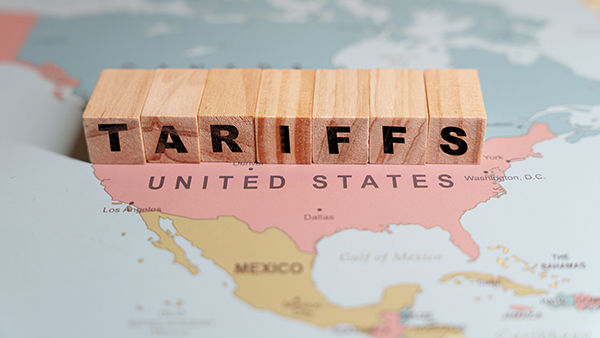The new financial year is under way, so it’s a good time to get your ’financial house’ in order for 2024-25 as good financial planning is a year-round consideration, not just a 30 June event.
With the stage 3 tax cuts in play, you’ll have more disposable income, so explore how best to use your tax savings where they’re not completely gobbled up from the rising cost of living.
You could put the savings towards your mortgage or build or add to an investment portfolio – choose the optimal ownership structure, including trusts, companies, or investment bonds that ensures you’re minimising tax, maximising long-term returns, increasing asset protection and minimising risk.
Alternatively, you could make additional super contributions.
What are the super opportunities this year?
The pre-tax concessional contributions cap is now $30,000. Regardless of how much you have in super, you and/or your employer may contribute up to this amount but don’t worry if you exceed because there’s no penalty – the excess will be taxed as normal income as if it hadn’t gone into super in the first place.
The compulsory employer Superannuation Guarantee (SG) contribution rate is 11.5 per cent – from the first dollar you earn.
For wage earners, the opportunity to make increased voluntary concessional contributions will be partly absorbed by the SG rate increase.
And if you’re earning more than $260,870 and receiving SG contributions from multiple employers, you can ask an employer to stop paying it – to avoid beaching the cap – provided at least one continues to do so. But only do this if you can negotiate more salary because paying tax on something is better than not getting it at all.
If you wish to top-up your super, you can make a personal deductible contribution and/or arrange to make salary sacrifice contributions via your employer.
With a deductible contribution, you must provide your fund with a notice of intent to claim a tax deduction and have it acknowledged. This is usually done around tax time, but if you’re planning on starting an income stream, rolling over or withdrawing the contribution, it must be done first – don’t wait.
If you’re aged 67 to 74 and wish to make a personal deductible contribution, you must meet the work test – 40 hours of gainful employment in 30 days. If you won’t meet this test, but met it in 2023-24 and had a total superannuation balance below $300,000 at 30 June then you may contribute under the ‘work test exemption’, provided you haven’t used this exemption before.
Salary sacrifice allows you to ‘set-and-forget’ for the year as contributions will automatically be made on a regular basis. Making regular deposits into an investment at regular intervals is a powerful way to invest – known as ‘dollar cost averaging’. It provides the opportunity to build exposure to growth assets in a disciplined way, can reduce the risk of investing during volatile times and avoids the pitfalls of trying to time entry into markets.
Contributing yourself gives you control and certainty over the amount and timing of the contribution and dealing with the contributions cap at year end.
Also, you’re not reliant on someone else, and have peace of mind knowing your money gets to your fund. Many employers leave it for months between deducting money from wages and making the contribution. Unfortunately for some, the money never gets there. It also avoids a nightmare should your employer go into administration/receivership, as money deducted from salary but not contributed may take years to recover.
But if you’re unsure of your contribution capacity due to cost-of-living concerns and timing of expenditure, making a personal deductible contribution provides greater flexibility.
In calculating voluntary concessional contributions include your employer’s SG contributions or notional taxed contributions for a defined benefit fund, and your fund’s administration expenses and insurance premiums if paid by your employer, as all count towards the cap.
Any unused concessional contributions cap amounts since 2019-20 may be used, provided your total super balance was less than $500,000 at 30 June 2024. Any unused cap amount from 2018-19 is now lost.
You can now split up to 85 per cent of your concessional contributions made in 2023-24 to your spouse’s super – to even up balances to maximise the amount you can both get into the tax-free retirement phase, to move entitlements to older spouse for earlier access to tax-free benefits, or from a spouse at or over Age Pension age (now 67) to a younger spouse to shelter from Centrelink means testing.
It may also help with managing the impending tax on earnings on balances greater than $3 million.
If you used a ‘contribution reserving strategy’ in June to maximise your tax deduction in 2023-24, don’t forget to allocate that contribution by 28 July – only days away.
Whilst the work test does not apply to after-tax non-concessional contributions, you cannot contribute if your total super balance was $1.9 million or more at 30 June.
The non-concessional contributions cap – four times the concessional contributions cap – is now $120,000, but if your total super balance was less than $1.66 million at 30 June – and you’re under 75 on 1 July – you may contribute up to $360,000, and if it was between $1.66 and $1.78 million then it’s $240,000.
Check your contribution history since 1 July 2022 because if you’re in a bring-forward period then you will not benefit from this increase as the cap is set in the first year of the period.
To receive a $500 government co-contribution this year for a contribution of $1,000, your income must be less than $45,400 with at least 10 per cent of it coming from employment or business – and you must be under 71.
The co-contribution progressively reduces where you earn between $45,400 and $60,400.
You could also make a spouse contribution provided they’re under 75.
You may be eligible to make a ‘downsizer contribution’ of up to $300,000 if you sell a home that you or your spouse owned for at least 10 years and are aged 55 or more – boosting your super even if you’re otherwise ineligible to contribute due to age or your total super balance.
And if you’re using super to save for your first home, a voluntary contribution of up to $15,000 will help you get to the maximum releasable amount of $50,000 under the First Home Super Saver Scheme quicker – it takes years to get the greatest benefit from the scheme.
If you’re an eligible small business owner selling your business or an active business asset, don’t overlook the opportunity to make a CGT cap contribution of up to $1.78 million.
If you start a retirement phase pension, e.g. account-based pension, for the very first time, the limit on how much you can transfer into it – your transfer balance cap (TBC) – is $1.9 million.
With the CPI running hot, this amount may well be increased to $2 million, possibly even $2.1 million from next 1 July. So, if you’re going to be limited by the TBC, you may wish to consider holding off commencing a super pension – other than a transition to retirement income stream – until then.
But if you already have a pension, your TBC will be less. You can obtain this from ATO Online.
Now is the time to start planning to get ahead of the game.




